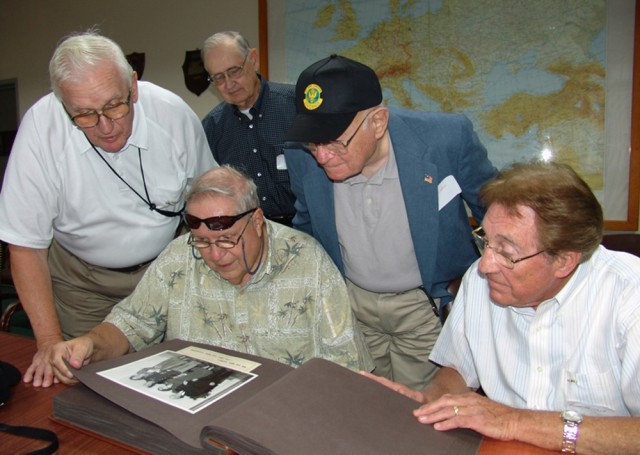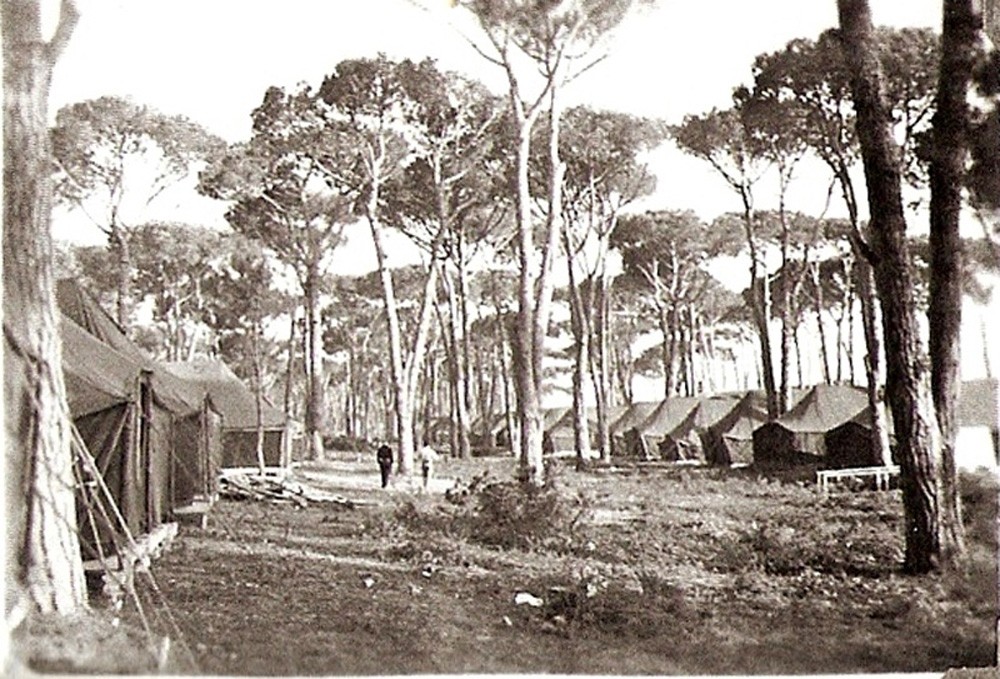LIVORNO, Italy - Standing on a street corner near the dock here, Al Fritsch, now in his 70s, waved an American flag.
Fritsch last wore a military uniform more than fifty years ago, but anyone passing by could see he maintained the stature of a Soldier. Acting as a forward observer, he searched for the military vehicle that would return him and his fellow veterans to a lifelong bond with a small military installation located near the Italian Riviera.
Fifty-six years ago, Pfc. Al Fritsch, Cpl. Edgar Tingley, Cpl. Joe Mularski, Cpl. Ed Napoleoni and 2nd Lt. Goldye Levi belonged to the Quartermaster Detachment, 7617th U.S. Forces Austria Support Command that helped establish Camp Darby, Italy. Most of them arrived in 1951 via a train from Wels, Austria - in full military dress, carrying M-1 rifles.
"When we got off the train in Livorno, it immediately caused an international incident between the American and Italian government," said Napoleoni. "I guess the Italian stance was that we could not be in uniform and certainly not armed."
Consequently, Napoleoni said the troops returned to the train, waiting several hours until an agreement was made, "so you can image our reception wasn't all that great. (But) after some time, we were able to win over these folks."
Levi took a more indirect route to Camp Darby.
"I landed in Bremerhaven, Germany, and made my way down to Austria where I immediately (joined) Operation Snowshoes," said Levi.
By the time he returned to Salzburg, his unit had arrived at Bremerhaven - so he packed to go meet them. However, they had taken a train to Italy by the time he made it.
Grabbing the unit car, the young lieutenant turned around and headed for Camp Darby. "It took me two and a half days," Levin recalled, "and once I got there, my unit (questioned) where I was and what I had been doing!"
In 1951, Camp Darby had no post accommodations, so the men stayed in a downtown hotel.
"We had come from living in (open bay) barracks at Camp Kilmer, N.J., where there wasn't a curtain or anything ... we all thought 'oh boy this is upscale, this is living'," said Fritsch.
"But you know how the Army is with its budget," he added. "They moved us down to the Tyrannean Sea, into an old orphanage summer retreat building.
"(But) they sent us in the winter, and there was no heat in the building. We ended up knocking holes in the wall to vent the stoves."
"Besides not having any heat," added Levi, "we also had no hot water. I remember it being a very cold Christmas."
By spring, the Soldiers began bathing by jumping into the sea from the retreat's windows. However, the Army soon had other living arrangement plans for the men.
Trucked to the Tombolo forest, where Camp Darby would eventually be built, the men initially constructed and lived in a tent city, which Napoleoni called "probably my best time here. We did everything together."
More than five decades later, Debra Lomi, a member of the U.S. Army Garrison Livorno library, escorted the veterans for a tour around old sites - where the Americans' stories and laughter became more voluble.
"We used to drink coffee and pastries there by the train station ... and its still there," exclaimed Fritsch. "Those girls just loved us."
"Do you remember the great turkey tragedy of 1952'" Mularski asked the group, recalling a supply ship with a crack in its hull that resulted in parts of a planned Thanksgiving dinner floating away.
"It was the funniest thing I (ever) did see," he said. "I remember all these frozen turkeys bobbing in the sea. The Italians were smart; they grabbed their dinghies, boats, anything that would float (to) scoop the turkeys. But the biggest lost to us were the two foot lockers of liqueur that sunk."
After touring the nearby area and Camp Darby, the group wanted to see if Army grub had changed over the years.
"In the old days, we used to have a mess tent - in the infinite wisdom of the Army -downwind from the latrine," Mularski said with a chuckle, adding that once a week they chowed on leftover World War II C-rats.
As Mularski reminisced, Levi slipped off to visit the dining hall kitchen, curious to see any mess modifications.
One piece of equipment caught his eye: "I can't believe the potato peeler that I delivered back in 1952 is still here," Levi said. "I was even more surprised that it's still working and being used. Folks really knew how to make machinery that lasts back then."
Afterwards, the group met with Lt. Col. Steven Cade, USAG Livorno commander, and garrison Command Sgt. Maj. William Berrios, sharing their exploits of helping to establish Camp Darby.
"Most of these fellas here today worked for me and did a tremendous job," said Levi. "At the time, none of them realized that this logistic center would become (a) strategic logistic operation for Europe and the Middle East."
As for Soldiers manning Camp Darby today, Levis called their contributions "an experience they'll long remember. I think it's very important that servicemembers stay in touch with each after they leave the military. I'm sure my group has increased their (longevity) by at least by 10 percent by staying in touch and doing things together."
"Once you're a Soldier, you're always a Soldier," observed Cade. "These veterans are the face of the Army in their communities back home. We are glad they were able to come back to see how an important of a role they had in building Camp Darby."




Social Sharing